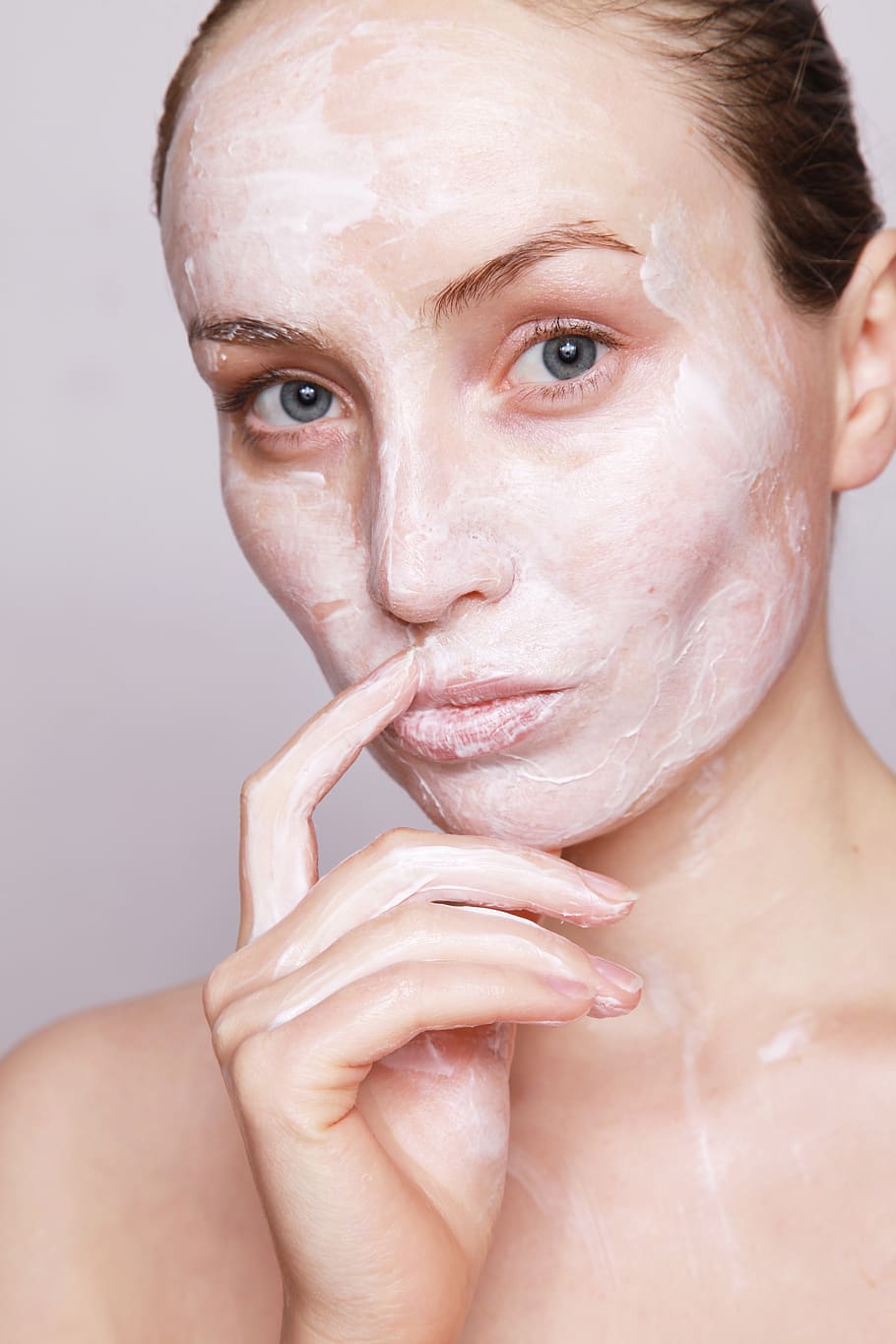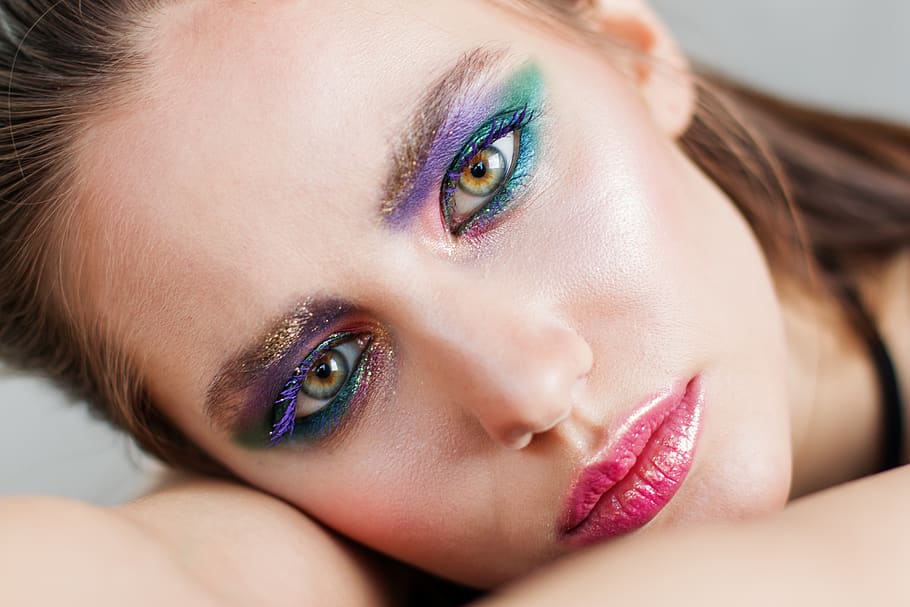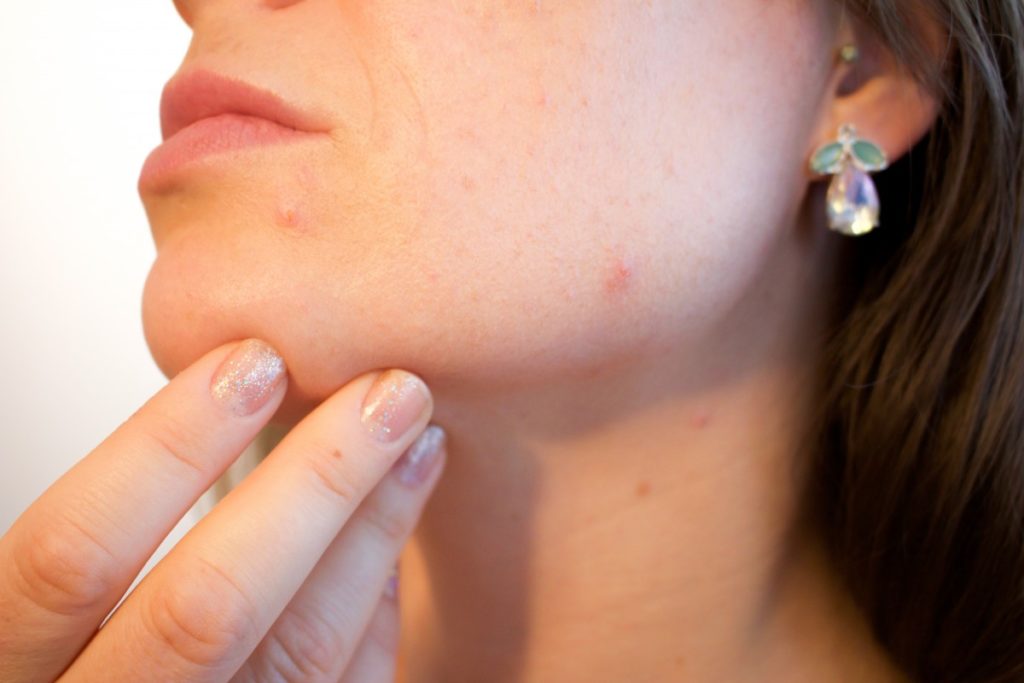Summary
– Symptoms of an allergy to cosmetics
– Cosmetic allergy: which products are involved?
– Treatment of a cosmetic allergy
We use many cosmetic products every day. However, some of them contain allergenic substances, which can trigger undesirable reactions in the skin.
Which of these substances are the most common, and what to do in case of an allergy? Answers in this article.
Symptoms of an allergy to cosmetics

The application of certain cosmetics on the skin can trigger allergic contact dermatitis. It is not always easy to differentiate this manifestation from simple irritations caused by applying products that are too aggressive or used too frequently.
This allergy appears in the form of eczema, which occurs 48 to 72 hours after applying the cosmetic product. It is characterized by :
– red patches with vesicles (small blisters containing liquid) and crusts;
– swelling;
– oozing;
– Itching.
Allergy to cosmetics: which products are involved?

Many compounds are used in the formulation of cosmetics, and among them, a significant number can trigger allergies. These manifestations are localized at the level of the application zone (face, scalp…) or can be more extended. The most frequently incriminated are:
– Perfumes: 26 allergenic aromatic compounds, natural or chemical, must be mentioned when they enter at least 0.01% in the composition of cosmetics that are rinsed off after application (such as shampoos) and 0.001% in cosmetics without rinsing (such as lotions). They are, for example, geraniol, coumarin, butylphenyl methylpropional…
– Filters present in sun creams: reactions can be amplified after exposure to the sun.
– Preservatives: among them, methylisothiazolinone (MIT) is often responsible for allergies. Initially reserved for products to be rinsed off, which limits contact time with the skin and, therefore, the risk of allergy, you can now find this compound in all types of cosmetics, such as those impregnating wipes.
– Dyes: paraphenylenediamine (or PPD) is a black dye present in hair dyes; it causes reactions in some users. For this reason, it is now prohibited for skin use in temporary tattoos, for example.
Please note: it is forbidden to sell cosmetic products containing MIT (methylisothiazolinone) in concentrations higher than 0.0015%.
When you feel itching around the eyes, it is not always the mascara that is at fault! The formaldehyde resin (or tosylamide) contained in nail polish can cause eczema in the eye. Formaldehyde in a concentration higher than 0.1% is classified as carcinogenic (it is implicated in the occurrence of leukemia, including chronic myeloid leukemia).
Treatment of an allergy to cosmetics
In case of a reaction to a cosmetic product, it is necessary to make an appointment with your dermatologist or allergist. The dermatologist will perform skin tests to precisely identify the allergen:
– For example, they can use the “patch test”, which consists of placing the suspected products on small adhesive patches and then applying them to the patient’s skin.
– The device is left in place for 48 hours. If a skin reaction appears, the allergy diagnosis is confirmed. It is then necessary to avoid any contact with the compound(s) causing the reactions. It is, therefore, necessary to carefully read the composition of all products purchased.
Several approaches are possible to alleviate the symptoms of an allergy to cosmetics:
– application of a corticosteroid-based cream to the affected areas;
– oral administration of antihistamines or corticosteroids.
Good to know: in general, it is preferable to choose cosmetics that are labeled “no colorants or preservatives” to minimize the risk of allergy.
How did you find this post on allergy to cosmetics? Remember to share it and leave your comments below.


